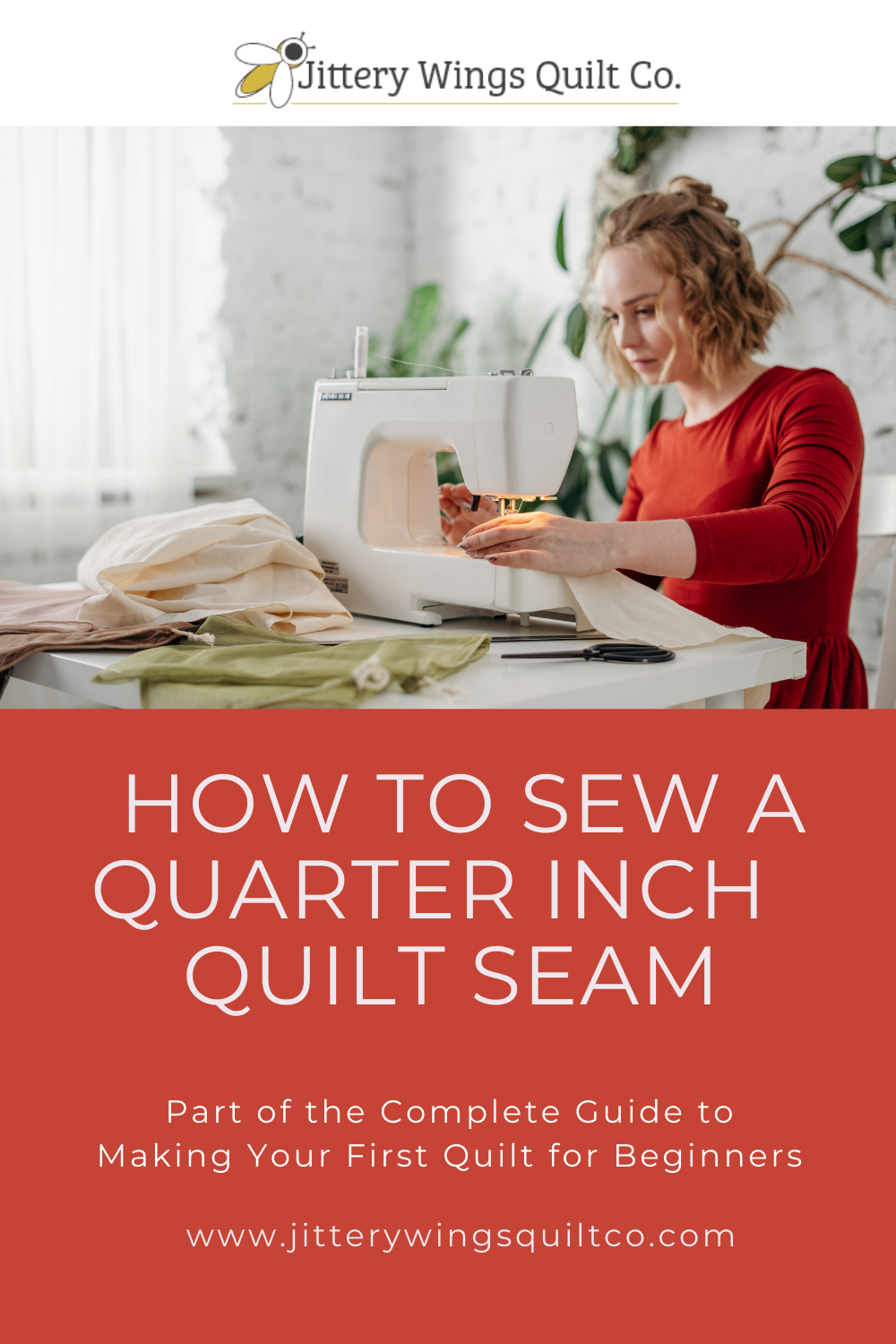How to Sew a Quarter Inch Quilt Seam
If you started your sewing journey making garments, you are likely familiar with a 5/8” seam allowance. My first quilt used a 5/8” seam allowance and well, it was bulky and clunky.
For a quilt, the seam allowance should always be ¼” unless otherwise stated in the pattern. This length maximizes your fabric and minimizes your bulk.
To sew a quilt seam, first begin by turning the two pieces right sides together (RST) and matching up the top, side, and bottom edges of the two pieces.
Set your stitch length on the sewing machine to 1.5 - 1.8. I like 1.8 on my machine. This is the number of stitches per length. On my machine it is a dial. On others it is a digital setting.
Next Place the end of the two pieces under the presser foot at the very end. Begin stitching two stitches to start the machine. Backstitch two stitches to “lock” your stitches and keep them from unraveling during movement. Line up the edge of the ¼” presser foot (shown here) with the edge of the fabric. The fabric should not stick out beyond the presser foot. There is usually a ¼” seam line on the metal place of the sewing machine to help you follow.
Go slow! This is not a race. The slower and more controlled you begin, the better your seams will turn out.
Sew all the way to the end.
¼” Seam Allowance: A quarter-inch seam allowance is used in quilting to piece blocks together. A 5/8” seam allowance is generally used in garment sewing. If you use a 5/8” seam allowance in quilting, the quilt blocks will not come out as intended.
Wrong Sides Together (WST): The wrong side of the fabric refers to the back of the printed fabric. It is usually lighter in color and not as pretty. Solids usually look the same on both sides.
Right Sides Together (RST): The right side of the fabric refers to the printed or “pretty” side of the fabric. When sewing seams, the right sides of both fabrics go together. You may see, “Place fabrics RST” in the piecing instructions.



